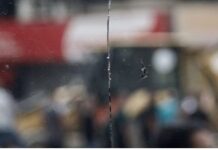Robert Tollast
The National / September 3, 2024
Return of Israeli forces to garrisons in Salah al-Din corridor would restore area to pre-2005 military occupation.
Israel could control all of Gaza’s borders permanently following repeated remarks by Prime Minister Benjamin Netanyahu that a stretch of land known as the Salah Al Din corridor would be garrisoned by Israeli troops.
The issue sparked heated debate on the contested area, which Egypt insists is well-controlled by its forces on the Egyptian side, and which Israel insists remains a key conduit for Hamas supplies. Meanwhile, international organizations insist the southern border, in particular Rafah, is one of the most important lifelines for the Palestinian enclave.
Either way, the row has highlighted the strategic importance of this small strip of land that Netanyahu calls “Hamas’s oxygen pipe”.
Why is Gaza’s southern border vital?
The largely devastated zone next to Egypt’s border, known to Israel as the Philadelphi Corridor, was initially intended to be part of a demilitarized zone following the 1979 Egypt-Israel peace agreement. It straddles some of Gaza’s most critical land crossings for aid and postwar reconstruction material.
To Israeli forces and Hamas, it is seen as a main supply conduit for the organization. Israel claims that much of the 6,000 tons of concrete they estimate Hamas used to construct hundreds of kilometres of tunnels under Gaza was brought in through the buffer zone.
Before the start of the October 7 Israel-Gaza war, the enclave was widely regarded as being under siege-like conditions. There were no-go zones around the entire territory and strict Israeli controls on goods and construction material entering the strip, a system known as the Gaza Reconstruction Mechanism, which was partly overseen by the UN and the Palestinian Authority.
Israel created a buffer zone, including the corridor, during its direct occupation of the enclave before 2005, demolishing houses in Rafah, albeit on a smaller scale than in the current war. Troops departed from Gaza, along with a small number of Israeli settlements, under a short-lived peace agreement in 2005.
Egyptian concerns
The prospect of the corridor’s permanent reoccupation by Israel has sparked anger from Hamas, but also Egypt, which warned in January, as a major Israeli operation in Rafah loomed, that it would not accept a permanent Israeli presence there.
Egyptian Foreign Minister Badr Abdelatty said on Monday that Cairo “insists on operating the Rafah crossing from the other side under Palestinian supervision and demands a return to the situation as it was before 7 October”. Diaa Rashwan, head of Egypt’s State Information Service, warned in January that Israel stationing troops there would represent a “serious threat to Egyptian-Israeli relations”.
Egypt’s position “is more a matter of national psychology than of any true interest”, says Chuck Freilich, a former deputy national security adviser in the Israeli government.
“I think having control of the corridor is important, that’s where Hamas brought in most of its resources, financial and physical, but partial solutions can be found and in any event if that is an obstacle to bringing the hostages home, whoever is still alive, it is a price worth paying,” Freilich told The National.
Hamas spokesman Khalil al-Hayya has said the “Israeli regime’s withdrawal from Philadelphi, Netzarim and Rafah corridors” is a condition for a ceasefire in Gaza and the return of surviving hostages.
In terms of “partial solutions”, Bloomberg reported discussions in July to establish a joint EU-Palestinian Authority control mechanism for the Rafah crossing.
Netanyahu’s comments have also sparked anger in Israel, where an editorial in Israeli publication Haaretz said he had “sentenced the hostages to death” by insisting on retaining control of the southern border.
“Israel has to end this war and bring the hostages home. Ending the war may not be in Netanyahu’s interest,” Freilich says.
Tunnel war
Israel has long insisted that Hamas has tunneled under the border area from the Sinai Peninsula, smuggling weapons and material to build bunkers and more tunnels, an accusation Egypt rejects. Cairo says its troops are successful at controlling access to the enclave and that any Hamas operations along the border, or under it, would be impossible.
Egyptian troops have in the past engaged in operations to flood or blow up tunnels created by Hamas or smugglers, destroying 1,500 of the underground structures, Rashwan said.
On the Gaza side of the corridor, Israel has stepped up destructive operations to expand the buffer zone, razing entire neighbourhoods, such as Al-Qarya as Suwaydiya, a coastal settlement known as the Swedish village.
Gaza’s remaining crossing points
Permanent Israeli control of the border would strengthen Israel’s chokehold on Rafah, a former main transit point for aid convoys from supply hubs in Egypt, held up by stringent Israeli checks in a nearby area, Nitzana, described as a “no-man’s land”.
Some of that aid, after a slow inspection process, has been sent on to the Israel-held Karam Abu Salem crossing, which is not open around the clock, despite the urgency of the aid crisis.
Both of these crossing points have at times been closed entirely, due to fighting or disagreements between Hamas and Israel. Rafah has been shut since early May following Israel’s seizure of the crossing and failed talks between Israel, Hamas and Egypt on the terms of its reopening.
This leaves Beit Hanoun in the north, which crosses over to Erez on the Israeli side, the main crossing point into Israel and beyond, to the occupied West Bank.
Gaza has also long been without an adequate port, and its main fishing port in Gaza city in the north has been destroyed by Israeli bombardment. That is one reason why the US erected a temporary and highly controversial pier to distribute aid earlier this year.
Robert Tollast – Assistant Foreign Editor, Abu Dhabi












